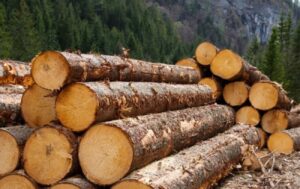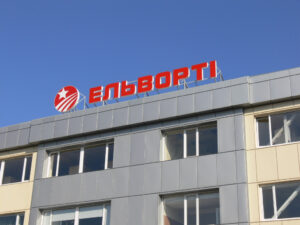
Ukraine may export an additional 46,000 tons of sugar to the EU as early as 2025, according to a statement by the National Association of Sugar Producers of Ukraine “Ukrtsukor” on its Telegram channel.
The industry association recalled that on October 29, 2025, an updated trade agreement between Ukraine and the European Union came into force, which provides for a 400% increase in the tariff quota for white sugar to 100,000 tons. As part of the agreements reached, the quota for the current year has also been revised, which will allow Ukrainian sugar producers to export an additional 46,625.8 tons of white sugar to the EU by the end of 2025.
According to Cabinet of Ministers Resolution No. 1368 of October 29, 2025, this volume will be distributed among exporters in proportion to the volume of exports of the specified products to the EU during January-May 2025.
Ukrtsukor specified that in October 2025, Ukraine exported 44.4 thousand tons of sugar worth over $20 million, of which only 2% was supplied to EU markets. Lebanon was the leader in terms of export volume, receiving 48% of all sugar. Syria and North Macedonia were also among the top three importers of Ukrainian sugar in October.

The moratorium on the export of unprocessed timber from Ukraine, which was introduced on November 1, 2015, for 10 years, has been temporarily extended by a decision of the Cabinet of Ministers of Ukraine until the end of the year in the form of a zero export quota.
“At the request of businesses, the government has made an important decision to temporarily ban the export of unprocessed timber. This is a necessary step to take care of people in winter, preserve the work of our enterprises, and reduce the burden on the environment,” Ukrainian Prime Minister Yulia Svyrydenko wrote on Friday on Telegram following her trip to the Rivne region.
She noted that the volume of logging in Ukraine has significantly decreased during the full-scale invasion by the Russian Federation. “Enterprises that could be operating are idle or working at minimum capacity due to a lack of wood. The army needs wood for its own needs. Life in rural communities, where firewood is a key resource for heating in winter, depends on the availability of wood,” the head of government wrote.
In addition, according to Svyrydenko, the war has caused significant damage to the environment, as part of the forests are temporarily occupied or damaged by hostilities. “Therefore, timber exports will create an additional burden on the environment,” the prime minister noted.
“The decision provides for export licensing – a zero quota until the end of the year. We continue to work on further steps to systematically address the timber shortage,” Svyrydenko said.
The head of the State Forest Resources Agency of Ukraine, Viktor Smal, previously told the agency that according to the law adopted in 2015, the moratorium on the export of unprocessed timber of all tree species, except pine (a 10-year moratorium was introduced for pine on January 1, 2017), will end on November 1, 2025.
Smal clarified that the extension of the moratorium for the duration of martial law and for another 10 years after it is provided for in the draft law on the timber market, which is currently being prepared for its first reading.
“In my opinion, 10 years is definitely enough to recover from all these shocks in terms of production and investment,” said the head of the State Forestry Agency.
He believes that the moratorium has been beneficial because a large number of production facilities have expanded and opened in Ukraine. “If we look at the structure of our exports, we will see that the depth of our wood processing leaves much to be desired. We should try to make not boards, not beams, not pallets, but cribs, kitchen chairs, tables, and export them,” Smal added.
As reported, in January-August 2025, Ukraine exported $1,131.3 million worth of wood and wood products, which is 15.5% more than in January-August 2024. However, during the same period, wood and wood products worth $160.5 million were imported, which is 8.8% more than in January-August 2024.
During this period, wood and other fibrous cellulose materials worth $186.2 million were exported (19.1% more than in January-August 2024), and $594.3 million worth were imported (1.7% less than in January-August 2024).

Elvorti (Kropyvnytskyi), a manufacturer of sowing and soil cultivation equipment, earned nearly UAH 1.5 million in net profit in July-September 2025, compared to a loss of nearly UAH 6.4 million in the same period of 2024.
This result is based on the company’s interim financial report for nine months, published on Wednesday, according to which it increased its loss by 27.8% compared to January-September 2024, to UAH 15.9 million.
Earlier it was reported that in the first half of this year, the loss amounted to UAH 17.5 million (almost three times more than in the same period last year).
According to the report, Elvorti increased its net income by 18.5% in January-September, to UAH 502.8 million.
As reported, in January-June 2025, the company’s net income increased by 27.8% compared to the same period in 2024, to UAH 339 million. Thus, in the third quarter of this year, it increased by 3% to UAH 163.7 million.
According to the report, in the third quarter, the company exported products worth UAH 52.4 million, which accounted for 32% of sales for this period (in the second quarter – UAH 25.1 million). The main export markets are Kazakhstan, Moldova, Bulgaria, Latvia, and Romania.
In July-September, in particular, 115 seeders worth UAH 61.8 million, one cultivator worth UAH 616,000, 91 harrows worth UAH 30.4 million, four sprayers worth UAH 3.5 million, and two construction and road machines worth UAH 5.3 million were manufactured.
The average selling prices of seed drills were UAH 618,200, cultivators – UAH 326,600, harrows – UAH 357,600, and sprayers – UAH 1 million.
The company notes that Elvorti’s range of equipment is in seasonal demand, particularly seed drills and sprayers.
The main buyers of the equipment were, in particular, the Ukrainian companies “Tekhnotorg Don,” “Agro-Resource,” and “Agroprommontazh,” as well as Agropiese TGR Grup (Moldova) and Optikom OOD (Bulgaria).
Elvorti JSC, part of businessman Pavel Shtutman’s Elvorti Group, specializes in the production of sowing and soil cultivation equipment: seeders for sowing grain and row crops, cultivators for continuous and inter-row soil cultivation, and disc harrows for resource-saving soil cultivation.
Last year, the company reduced its losses by more than three times compared to 2023, to UAH 27.6 million, while its net income grew by 16.3% to UAH 570.5 million. This year, it plans to increase its revenue to UAH 712 million and break even.
As of September 30, 2025, the company employed 373 people.

TK-Home Textiles, part of the Textile-Contact Group (TK Group), has begun its first deliveries of products to Romania, according to the group’s owner, Alexander Sokolovsky.
“Romania has been added to the list of countries with which we currently have stable contracts for the export of finished products (namely Denmark, Germany, Lithuania, Latvia, Georgia, and France), and today we sent the first shipment of our own products there,” he wrote on Facebook on Monday.
Sokolovsky specified that so far these are only various sets of bed linen made of satin, calico, and flannel, made from 100% cotton produced by the TK-Chernigov factory.
“However, we plan to significantly expand the range for this customer in the future. Each new country is further confirmation that Ukrainian textiles have a worthy place in the European market,” he added.
The owner of the group also announced that TK-Domashniy Tekstil had won the Best Exporter of the Year competition for the second year in a row based on its performance in 2024 in the field of textile production, clothing, leather, leather goods, and other materials.
“I would like to thank the team, which in such difficult times, despite all the challenges, is not just holding on, but is looking for any opportunities to grow sales markets and increase the share of exports in our order portfolio,” Sokolovsky wrote.
TK-Domashniy Tekstil is a leader in the production of fabrics, home textiles, and children’s products in Ukraine. Its asset portfolio includes one of the few finishing factories in Ukraine that produces cotton fabrics in
Chernihiv, TK-DT Chernihiv. Its assets also include garment factories in Kyiv, Ternopil, Chernihiv, and Odesa; a shoe factory in Chyhyryn; a knitting factory; and a synthetic winterizer factory in Chernihiv.
TK Group was founded in 1995. It currently represents a holding company that combines the entire range of services in the textile industry, from raw materials and threads to ready-made solutions for B2B, B2G, and B2C customers.
The group consists of 13 factories and employs about 1,500 people.

ALVIVA GROUP, a leading player in Ukraine’s food industry, presented its first export brand, Alviva, at the Anuga 2025 international exhibition. The exhibition, which is the largest and most influential global platform for food and beverage manufacturers, took place from October 4 to 8, 2025, in Cologne, Germany.
The launch of the Alviva brand is a logical and consistent step in the implementation of the group’s strategy aimed at systematically expanding volumes, export geography, and diversifying the export range.
Today, the new multi-category brand’s product range includes 33 products in seven categories: wafers, long-life and sugar cookies, croissants, gingerbread, sandwich and toast bread, and snacks. The brand’s assortment focuses on formats, packaging, and flavors that are in stable demand in Europe and worldwide. The brand’s portfolio will be constantly replenished with new products that meet current consumer trends and will be expanded to 100 items in 9 categories.
The brand’s products are manufactured at nine of the group’s production sites in Kyiv, Kyiv, and Poltava regions. All enterprises comply with international ISO and HACCP standards.
“Our key goal is to increase exports of finished products. Over the next five years, we plan to bring the share of exports to 25% of total production. After all, exporting finished products not only diversifies the business, but also generates foreign currency revenue, which allows us to invest in modernization, automation, and innovation. This is the key to the sustainable development of ALVIVA GROUP,” said Oleksandr Varavka, Chairman of the Supervisory Board of ALVIVA GROUP. “The creation of a single export brand, Alviva, will allow us to more effectively represent our diverse range of products on international markets, strengthening the group’s position as a reliable supplier of high-quality finished products from Ukraine.”
For two years, ALVIVA GROUP has demonstrated positive export dynamics, confirming the high competitiveness of Ukrainian products. In 2024, the group exported over 3,000 tons of products. In just seven months of this year, exports of KYIVHLIB brand products amounted to over 2,000 tons, which is 33% more than in the same period last year.
The group’s products are already well known to consumers in more than 30 countries around the world and are represented both in ethnic stores and in leading European retail chains: Lidl, Maxima, RIMI, Kaufland, Globus, NORFA, Żabka, Linella, №1, Bonus, etc.
About ALVIVA GROUP:
ALVIVA GROUP is an international group of companies in the food technology and services sector, united by common management, strategy, and mission: “To promote the health and well-being of consumers by producing high-quality and delicious food products.” The group’s product portfolio includes brands that have already won the favor of consumers: KYIVHLIB, Tarta, Tendi, Norden Brod, British Sandwich, KYIVMLYN. The group’s annual cash turnover exceeds UAH 9 billion*, and its payments to the state budget in taxes and fees amount to over UAH 1.2 billion. With a staff of over 6,000 employees, ALVIVA GROUP is among the TOP 100 best employers in Ukraine and TOP business investors in education in 2022-2025, and is one of the leading players in the food industry in Ukraine. The group’s export geography covers 30 countries around the world. The group’s land bank totals over 4,000 hectares in the Kyiv and Chernihiv regions. Group website: alvivagroup.com
*financial indicators for 2024

The European Union is facing a serious crisis in the supply of critical materials after the decision of the Chinese government to impose new export restrictions on rare-earth magnets and raw materials for their production, reports Politico.
As noted, Beijing’s decision in early October has escalated the trade standoff with the United States and created risks for European industry, which is almost entirely dependent on imports of such elements from China.
“A crisis in the supply of critical raw materials is no longer a remote risk. It is already on our doorstep,” European Commission President Ursula von der Leyen told MEPs on the eve of the EU summit.
She emphasized the need for “decisive and urgent action” to ensure faster and more reliable supplies of critical materials “both within Europe itself and from trusted partners.”
European Trade Commissioner Maroš Šefčovič said the EU was not interested in escalating tensions, but emphasized the need to resolve the situation quickly. “However, this situation casts a shadow on our relations. Therefore, a quick solution is essential,” he said.
Šefčovič said China and the EU will “strengthen contacts at all levels” to discuss the restrictions. Chinese Commerce Minister Wang Wentao is due to arrive in Brussels for consultations in the coming days.
“The European Union is also holding talks with the G7 countries on an agreed response to the crisis ahead of a ministerial meeting to be held October 30-31 in Canada,” the report said.
Earlier, the information and analytical center Experts Club analyzed the global market of rare earth metals of the world and Ukraine, the video is available here -.
https://youtu.be/UHeBfpywpQc?si=0L-2nSUrLlIbqVZ5?si=Fk6Oi_13NKpEW81K
CHINA, EUROPEAN UNION, EXPERTS CLUB, EXPORT, rare earth elements